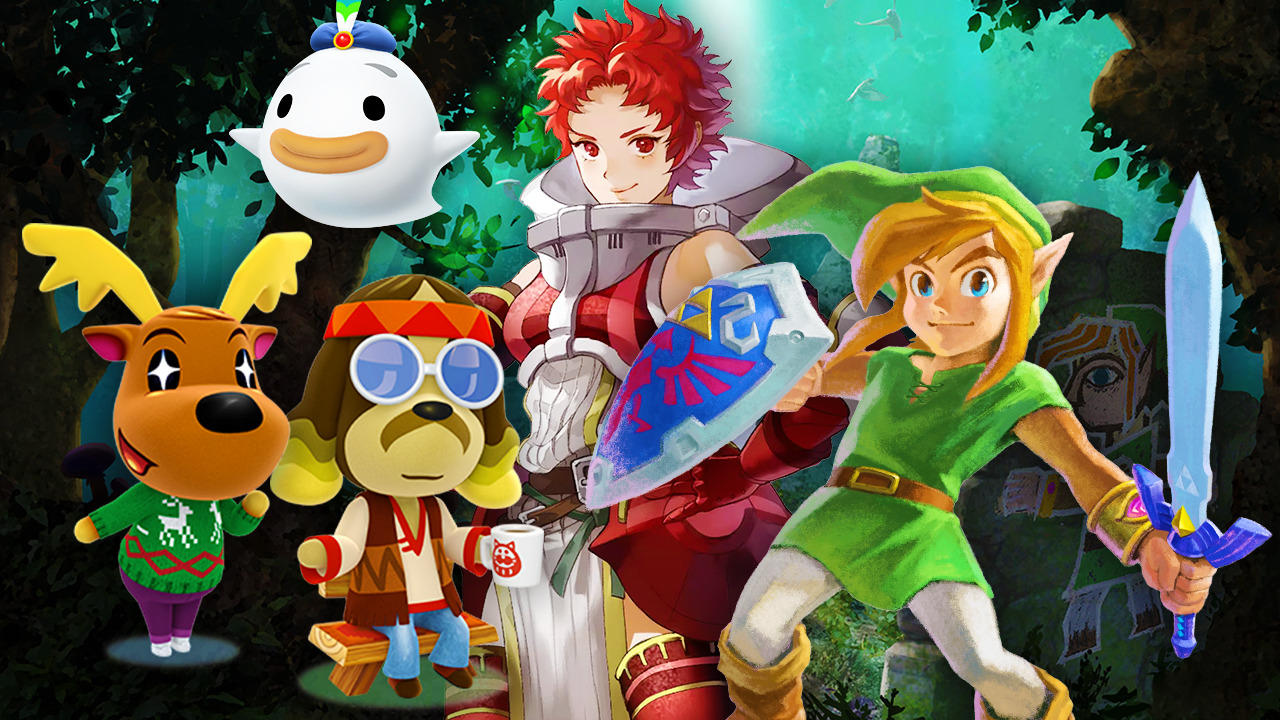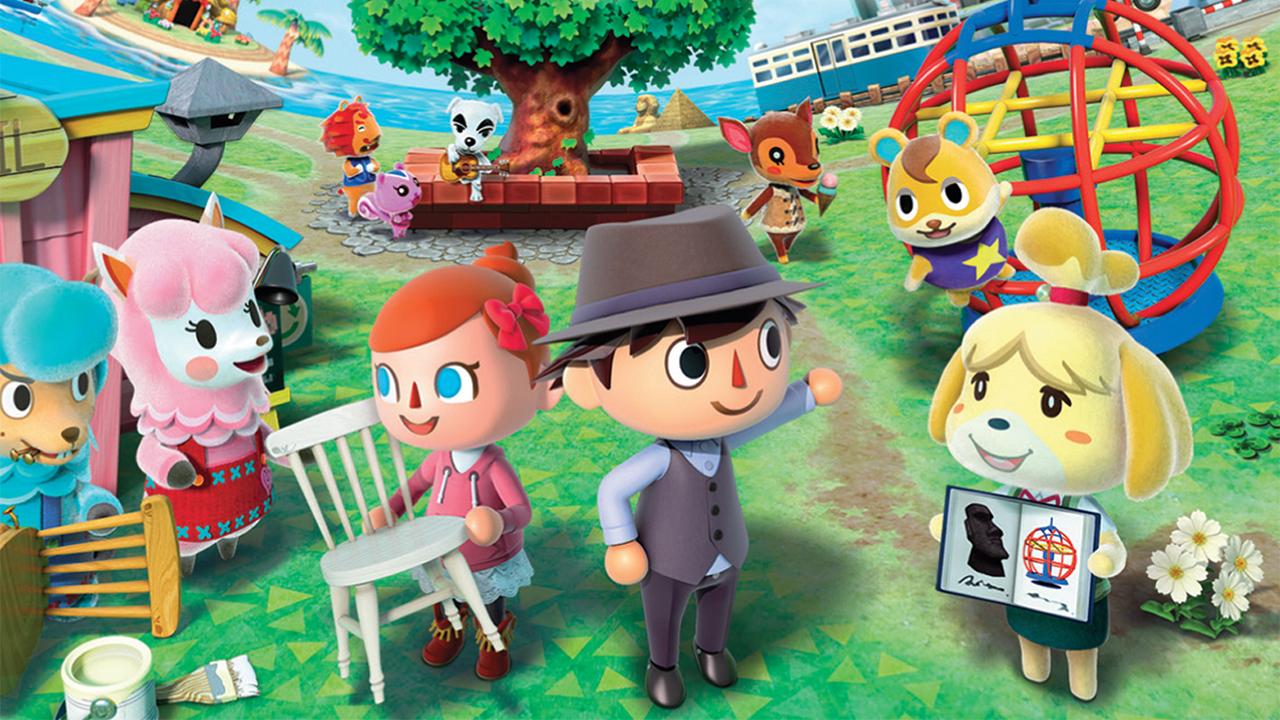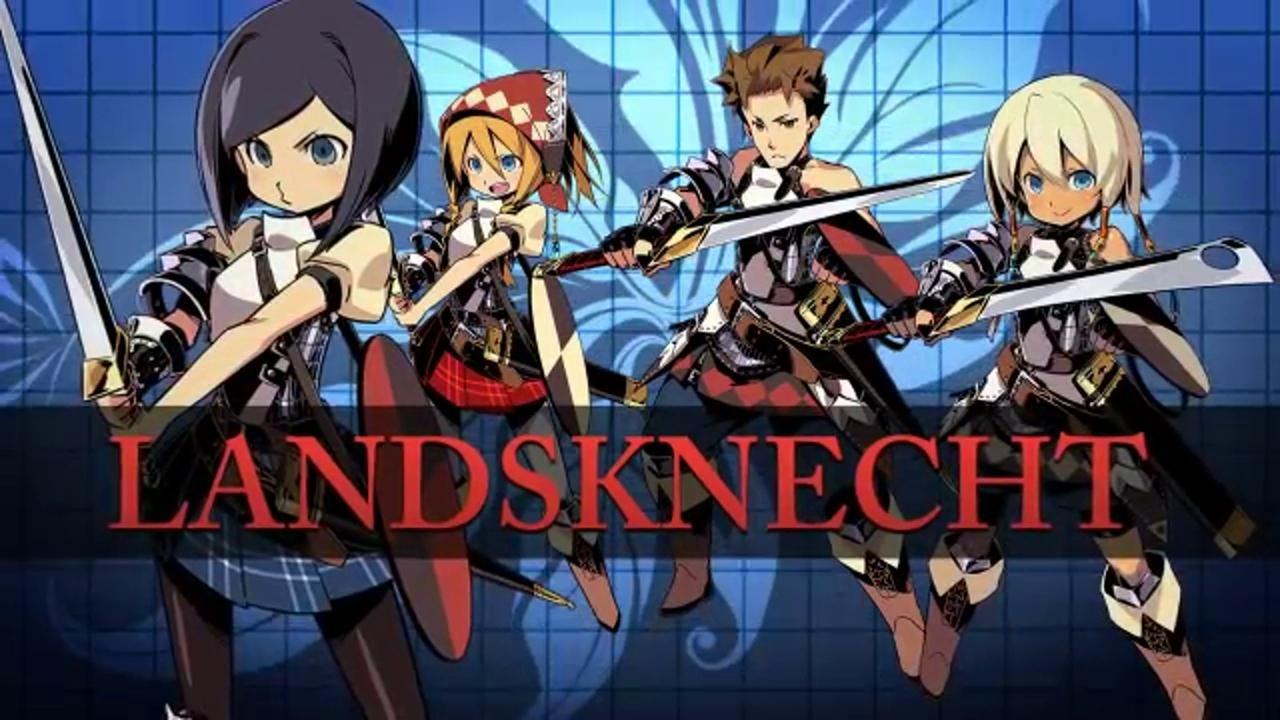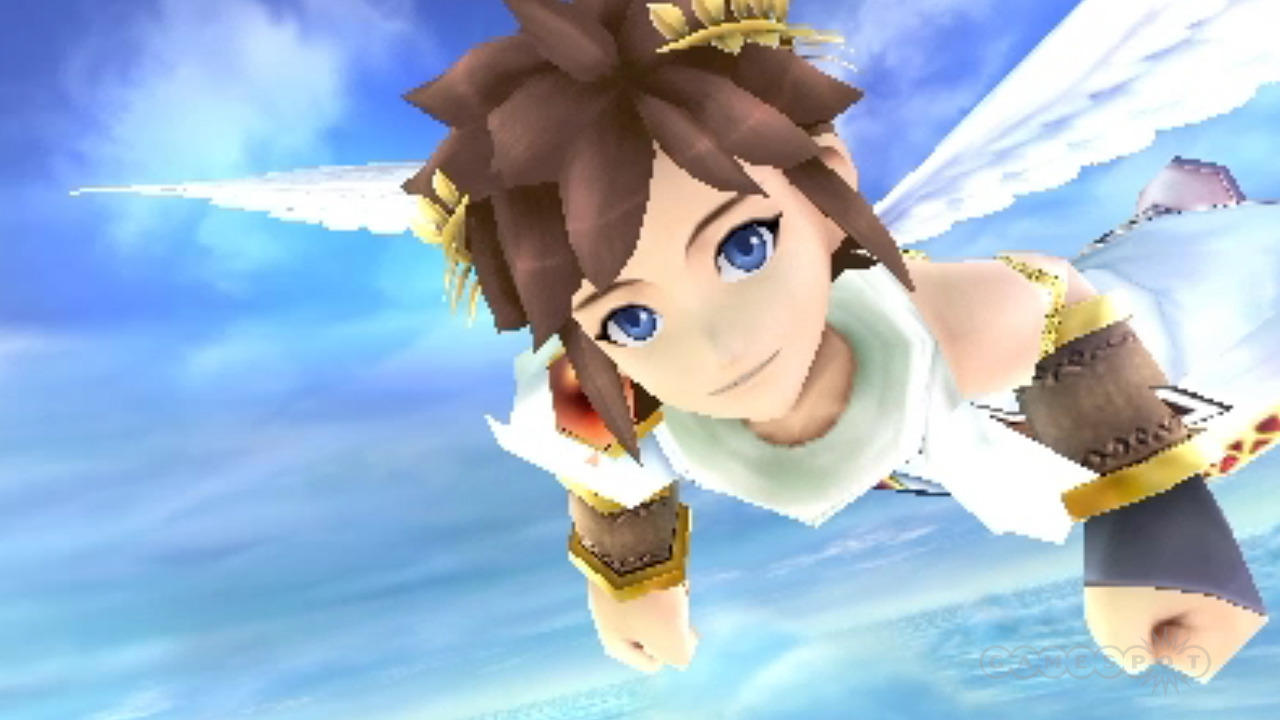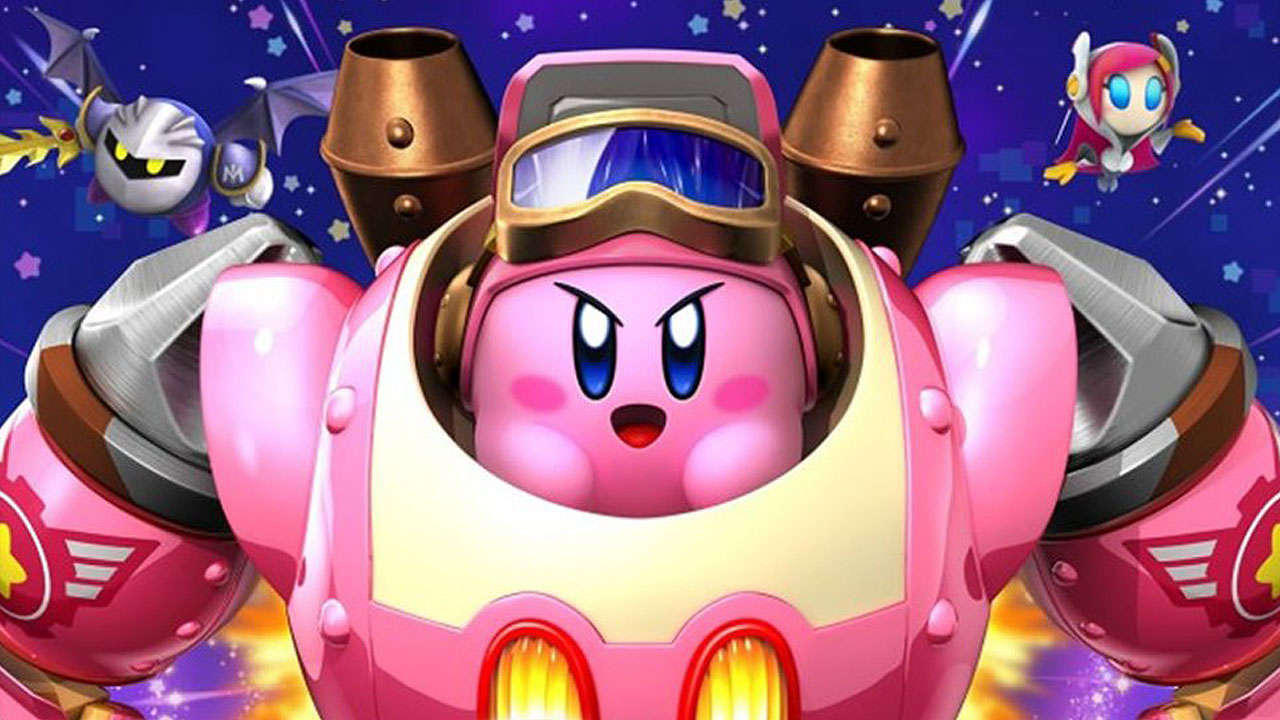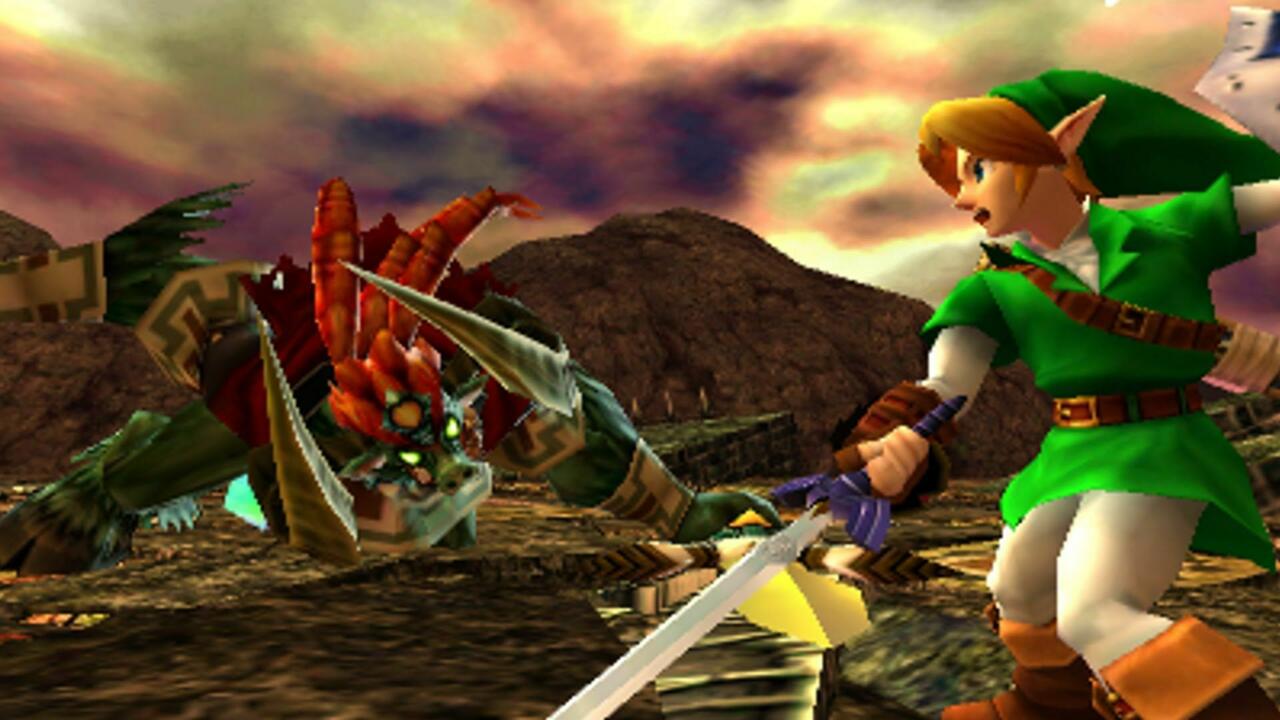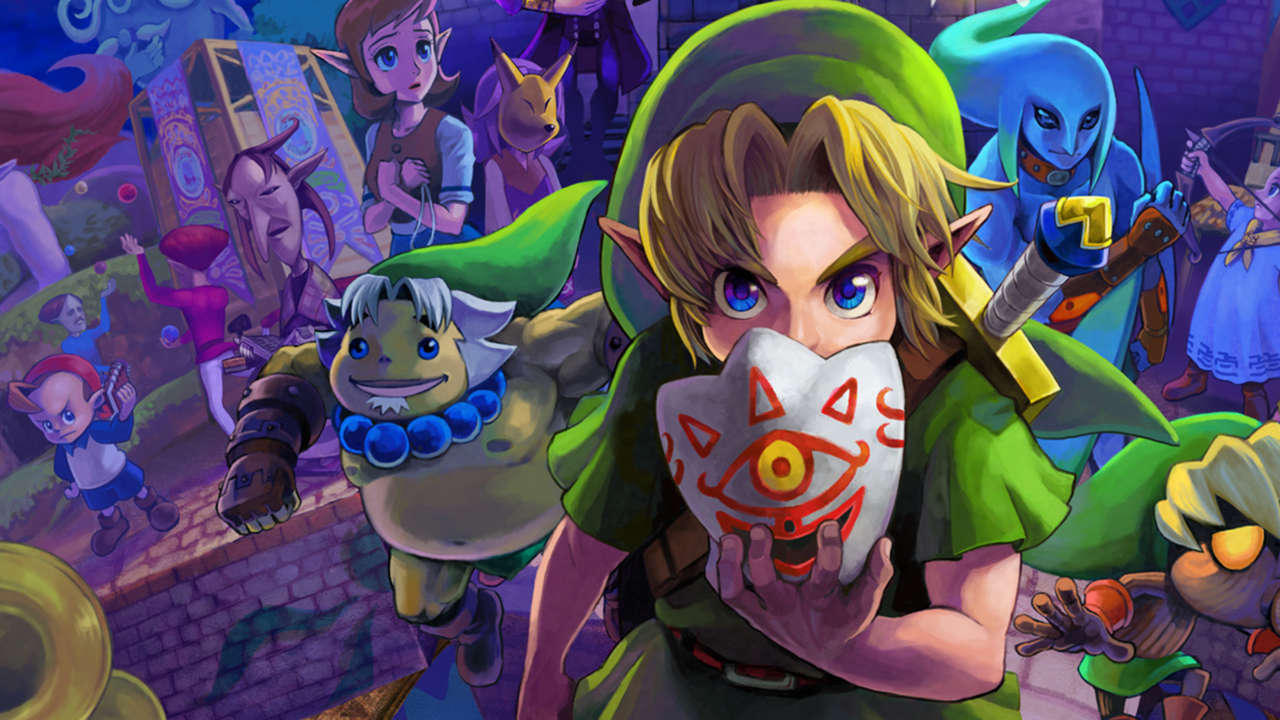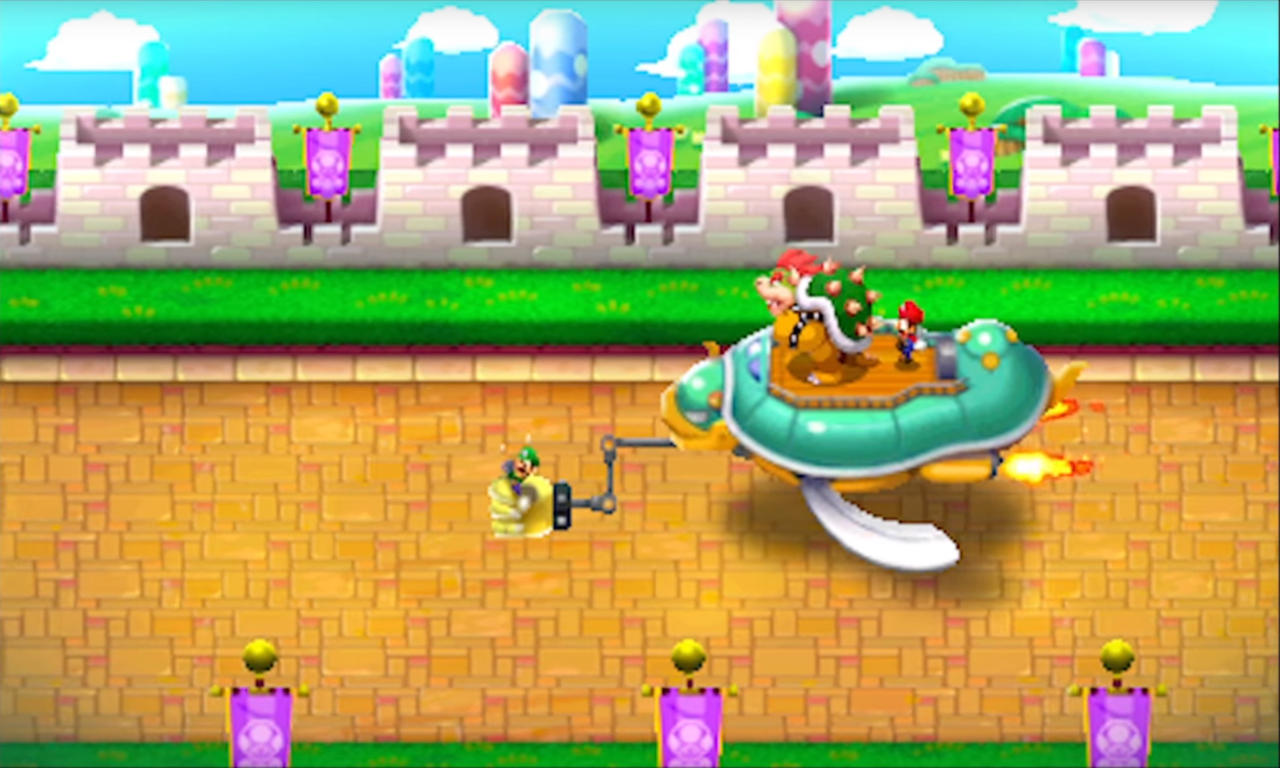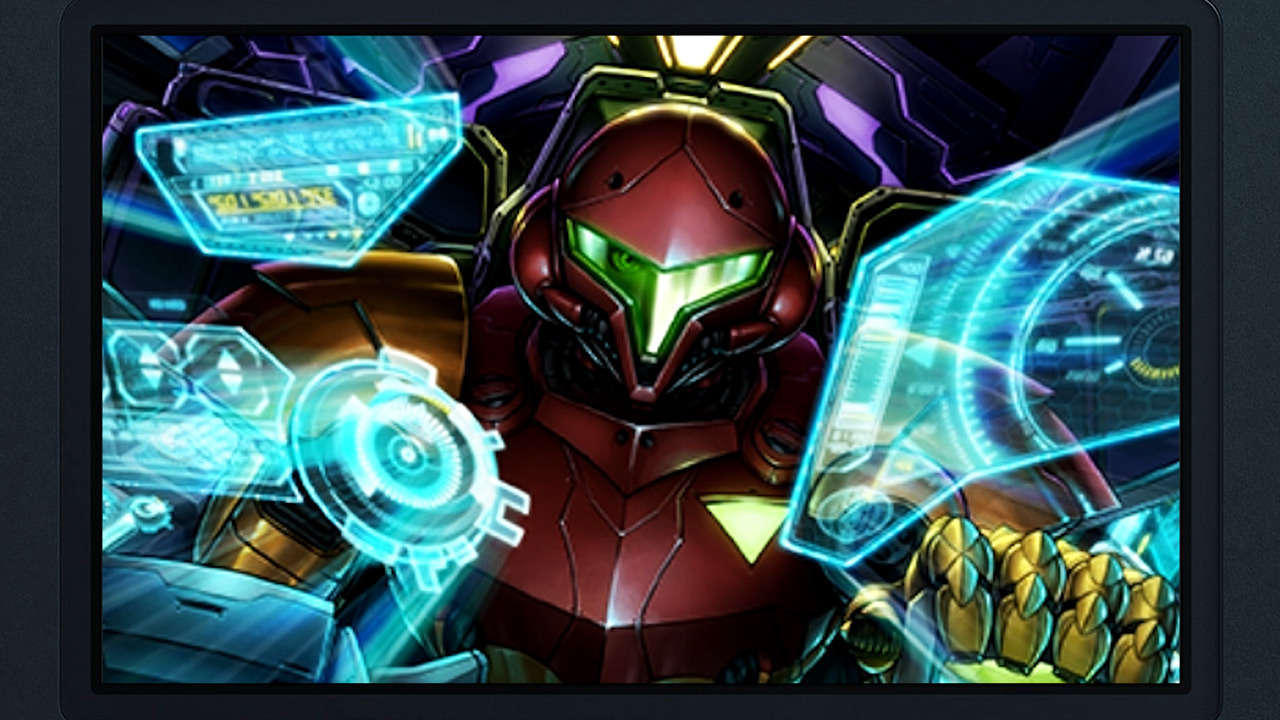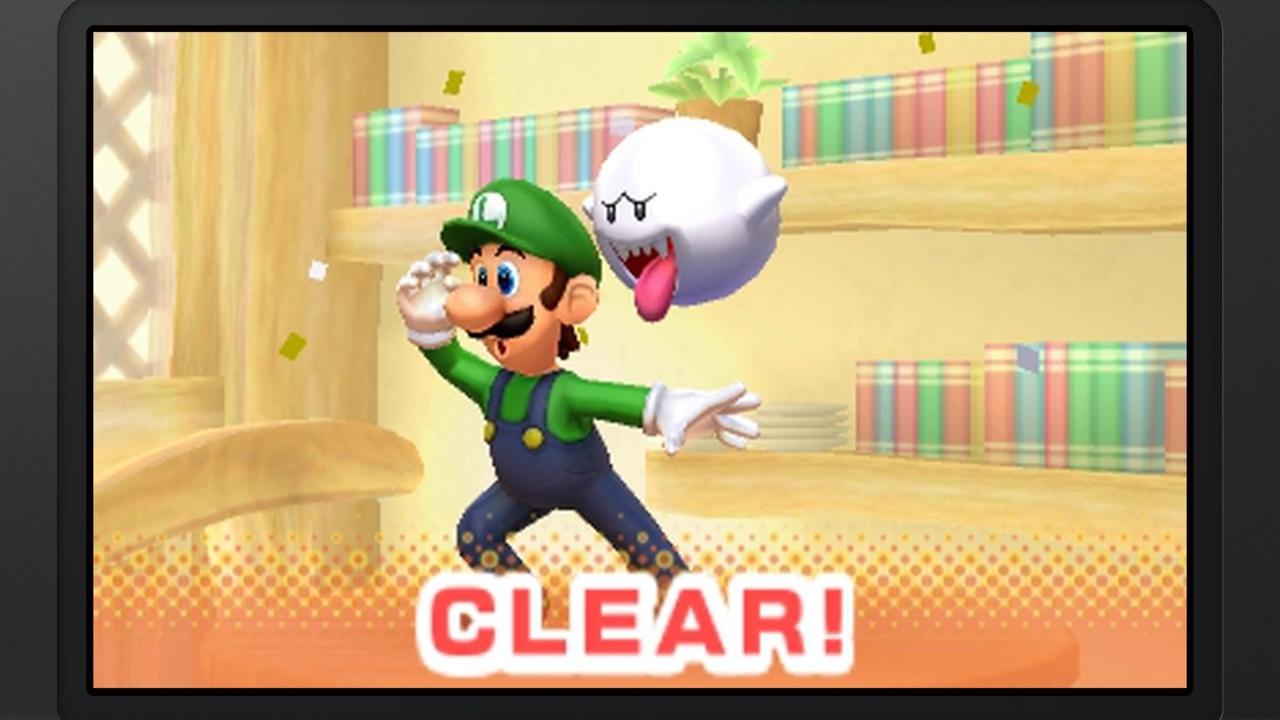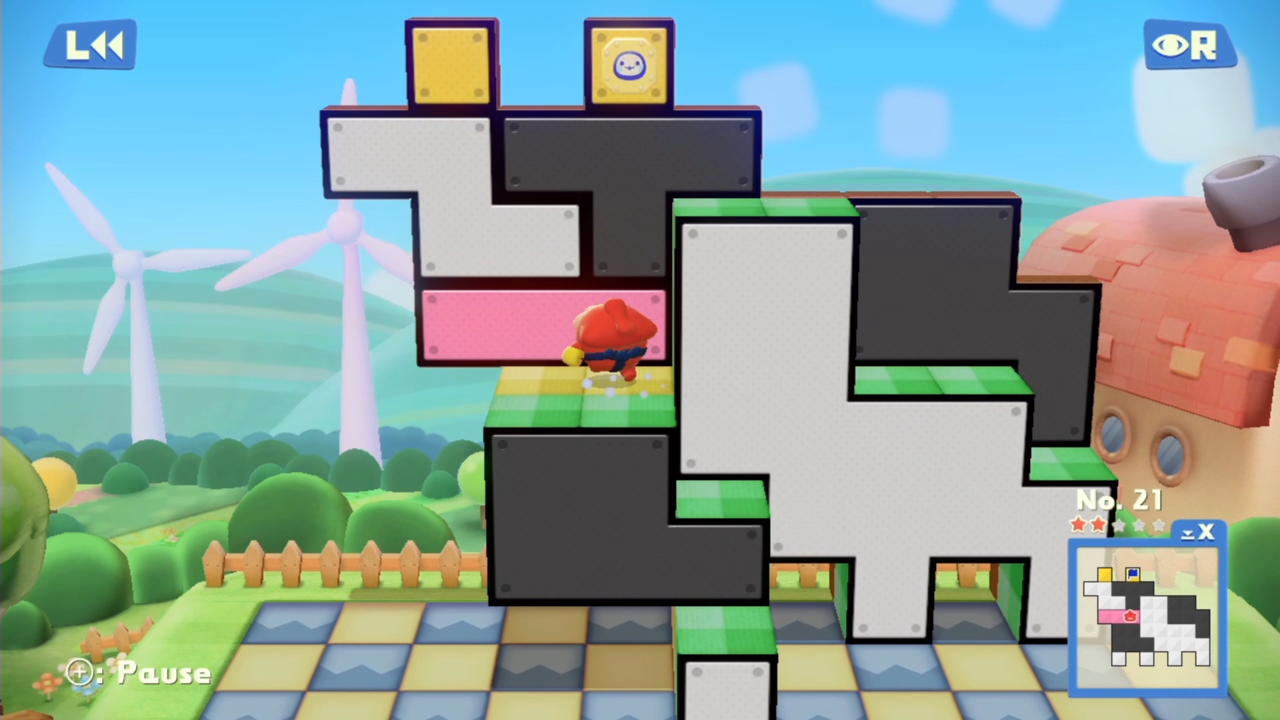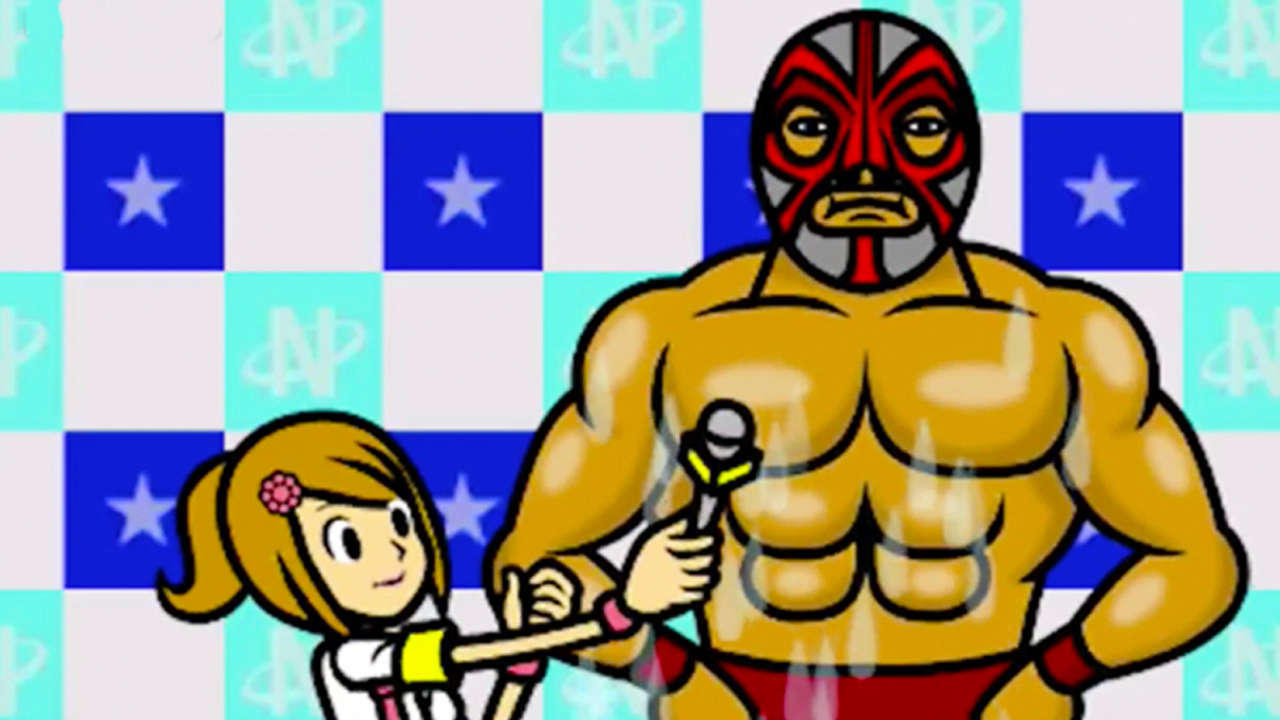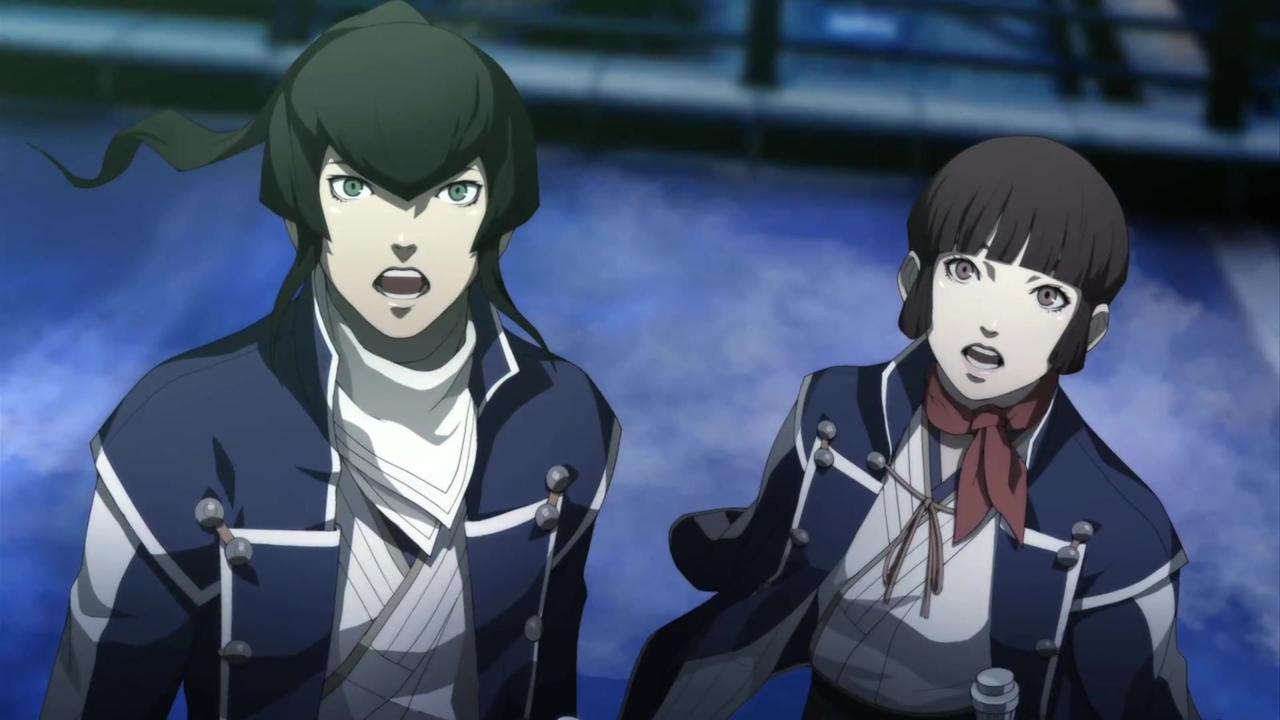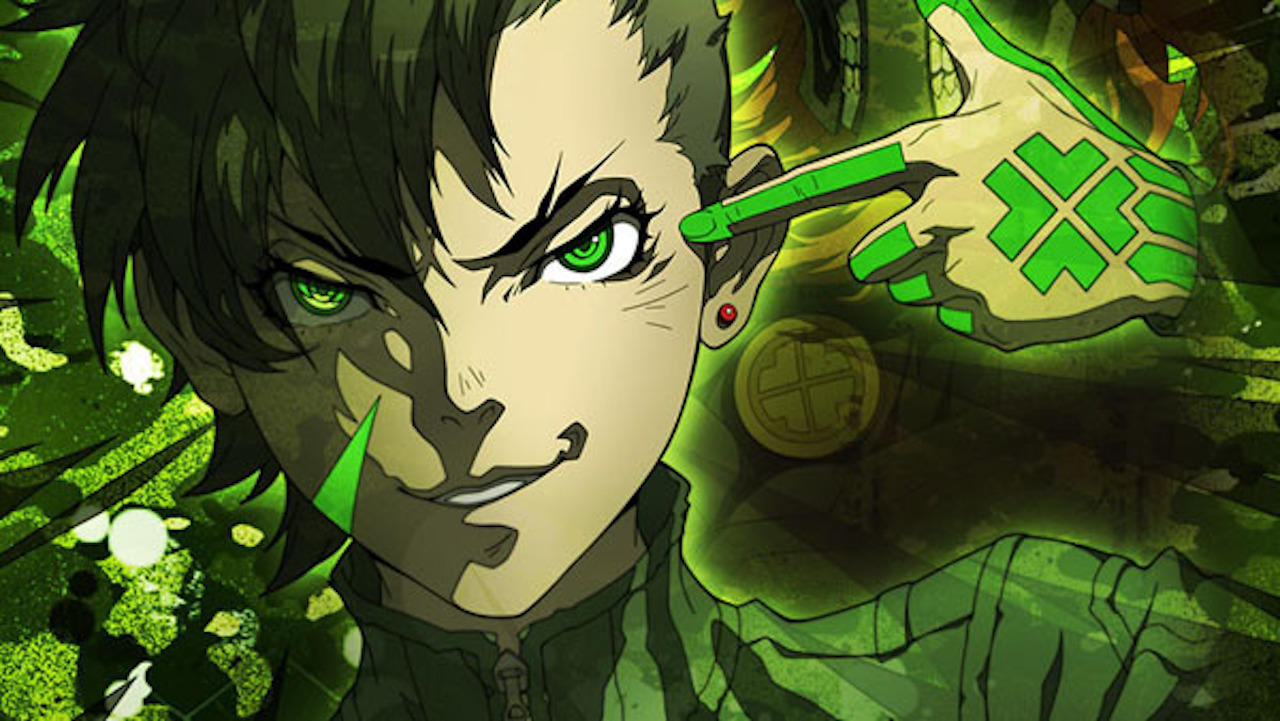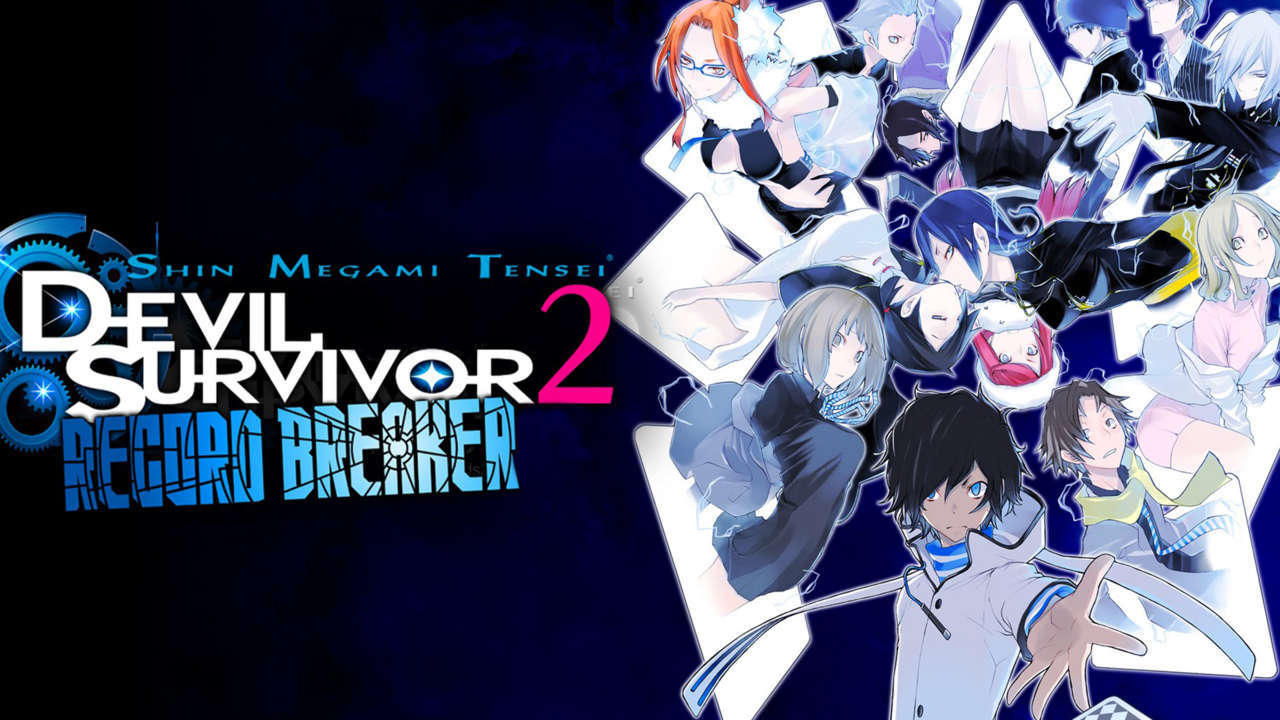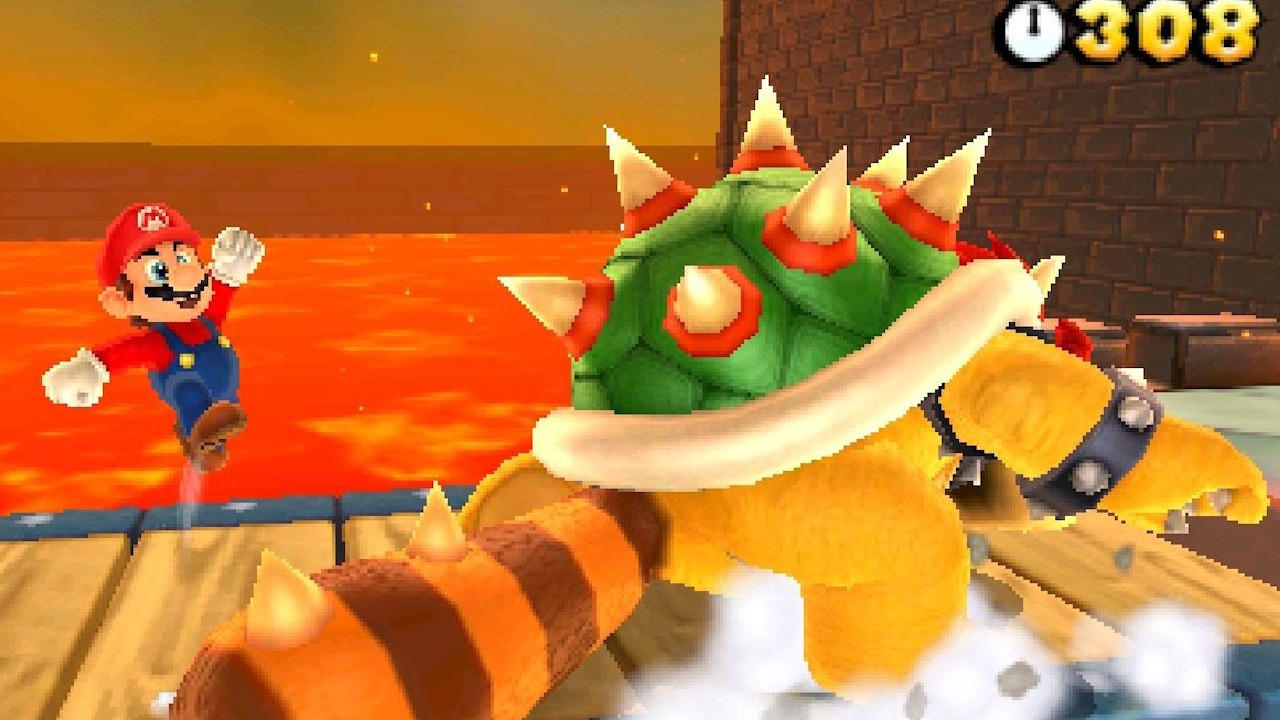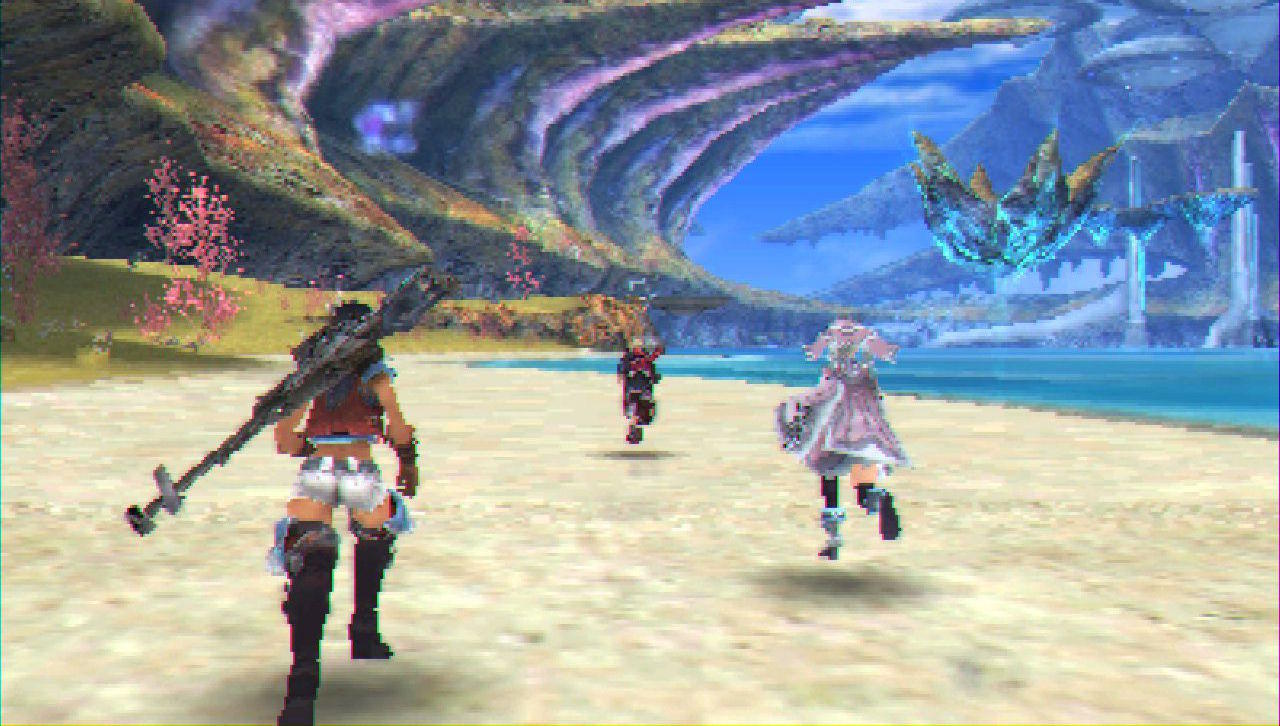26 Nintendo 3DS Games Still Worth Buying And Playing Today
GameSpot may receive revenue from affiliate and advertising partnerships for sharing this content and from purchases through links.
Happy 10th Anniversary, 3DS!
It's shocking to think that it has been a decade since the 3DS first launched in 2011. Now that Nintendo has completely shifted its focus over to the massively popular Switch, the once-dominant handheld is slowly but steadily fading from people's minds and becoming something of a retro console now.
Many were around for the 3DS' somewhat tepid launch, which often stains people's perceptions of the console's impressive legacy. With its unique glasses-free stereoscopic 3D, the handheld followed closely in line with Nintendo's ever-ambitious design philosophy of challenging the way we think about how games can look and play. While the feature was not enough to drive massive sales initially, the console sustained itself through the ups and downs with an excellent library of games.
To commemorate the 3DS's 10th anniversary, we're taking a look through the portable console's extensive library and picking out some of the best games it has to offer. The games we've highlighted below are well worth getting and dusting off your old 3DS to play. From Zelda and Pokemon to Picross and Rhythm Heaven, the 3DS has a great game for pretty much everyone, so don't fully retire this beloved handheld just yet. But if you don't already own a 3DS, we believe these games 100% justify getting one for yourself!
After all this talk about 3DS, if you're in the mood for more related features, be sure to check out our piece waxing on about the brilliance of Street Pass and our roundup highlighting the best games that actually utilized 3D well. Otherwise, read on!
Animal Crossing: New Leaf
Animal Crossing has long been a beloved life simulation series, and with New Leaf, the 3DS has something very special. A lot is the same as the previous games; you still move to a new town populated by cute animals, and you still have to pay off your home debt to Tom Nook. But New Leaf's twists on the formula make your town feel more unique, which makes it even easier to become completely drawn in.
In New Leaf, you move to a new town only to find out you're apparently the mayor. As such, you're given greater control over the town than in previous Animal Crossing games, including the placement of town decorations (like benches, clocks, and special buildings) and the overall vibe of the town. You're not just connected to the villagers and the laid-back atmosphere of fishing, bug collecting, and decorating; you're invested in the town on a different level than before, and it's an even more engaging game for it. Plus, the fan-favorite island from the GameCube version is back in New Leaf and ready to be farmed (how else are you going to pay off your loans?).
If you've become a massive fan of Animal Crossing: New Horizons, you owe it to yourself to also check out New Leaf. It's an ever-charming and notable predecessor well worth your time.
Etrian Odyssey IV: Legends of the Titan
Atlus' first-person dungeon crawler RPG series made its 3DS debut with the fourth entry, Etrian Odyssey IV: Legends of the Titan. Many of the gameplay elements Etrian Odyssey has been known for remain intact with some new additions, like an engaging overworld with an airship and powerful enemies that roam the skies. You still get the unique turn-based combat system where commands for each party member are decided upon before anything happens within that turn. Once every command is set, the turn unfolds in order of character agility. It forces you to think ahead and sharpen your planning skills when facing new enemies. Don't be surprised when an enemy knocks down an ally before they get their move in.
In the fantastical labyrinths of the Yggdrasil tree are the roots of exploration; the dungeons within the tree are mazes made up of several square blocks on a map that you have to draw yourself. You have to keep track of points of interest and passageways on the bottom 3DS screen, otherwise you'll be lost.
Like the previous game in the series can be rather difficult. Powerful boss-like foes known as F.O.E.s roam dungeons and the overworld, and a lot of progress can get lost if you slip up and your party gets wiped out. But if the standard difficulty is still a bit much, there's a casual mode that takes a little pressure off while still providing a challenge. Either way, EOIV provides a deep roleplaying experience in a colorful world where character specialization and customization take precedent.
Fire Emblem Awakening
Fire Emblem Awakening became the coming-out party for Intelligent Systems' niche tactical RPG series. While preserving much of the turn-based challenges the series is known for, Awakening's breadth of accessibility options appeals to newcomers, making it the perfect gateway installment. Chief among these features is the option to avoid permadeath, a key gameplay element that's long appealed to Fire Emblem purists. And its relatively short yet involving battles prove a fit for the popular and portable Nintendo handheld, easily overshadowing the lone Wii installment, Radiant Dawn, in spite of the home console's much larger user base.
Awakening's relationship-building component adds a strategic layer of gameplay but also drives players to develop attachments to their favorite characters. Ensemble cast-driven series like Mass Effect popularized the notion of "shipping" potentially amorous characters. Awakening's interpersonal cast relationships rode this social media-enabled trend with memorable warriors like Donnell and Tharja, who would be coveted characters in the mobile-exclusive Fire Emblem Heroes.
The introduction of the Pair Up mechanic in combat allows players to create deadly duos of their chosen characters to turn the tide in battle. Playing off the well-known battle triangle by allowing characters to swap to advantageous weapons in a pinch makes short work of previously drawn-out affairs and redistributes some of the series' focus on tactical positioning to how social bonds affect combat. This perfect storm of enthralling features could not have been more well-timed, as Nintendo considered cancelling the series depending on how Awakening was received.
Fire Emblem Fates
Fire Emblem Fates is the first title in the franchise to release as a multi-version affair: It offers players the option of three storylines based around its central protagonist. While the game treads familiar ground in continuing to craft narratives around war, Fates shows players all sides of the story, offering different entry points to the series depending on the difficulty level.
Its complex story and structure is a response to the Fire Emblem Awakening's plot, which was criticized for its simplicity. Handily, Fates keeps the accessibility options that were introduced in Awakening, including the option to avoid permadeath and the Pair Up mechanic. Each version carries its own regional classes, and combat differs depending on the version you choose. Birthright and Revelation's campaigns have simple objectives, while Conquest provides a more militaristic experience. Complementing these features is the distinct Japanese and European aesthetics of the story's opposing forces, while also bringing back Yusuke Kozaki's recognizable character designs that made Awakening's cast so memorable.
Chief among the improvements in Fates is the variety of things you can do in your downtime. You can go further than the series has ever allowed before when it comes to romantic relationships. Furthermore, base-building elements give players useful ways to interact with their armies, while StreetPass connectivity lets you swap rare items and materials with friends on the fly. For those who are on the fence, Fates' unique marriage of classic Fire Emblem sensibilities and streamlined gameplay is sure to be a hit.
Fire Emblem Echoes: Shadows of Valentia
Intelligent Systems' third 3DS Fire Emblem game is both a departure for the series and a throwback to the past. Designed as a reimagining of 1992's Fire Emblem Gaiden for the Nintendo Famicom (the Japanese equivalent of the NES), Echoes features free-roaming 3D dungeon exploration to break up the procession of tactical, 2D battles. But it's also remarkable for disregarding the recent trend of incorporating romance mechanics, as seen in Fates and Awakening. Both approaches are good, but Echoes feels especially notable for this contrasting quality.
The addition of Mila's Turnwheel, a mechanic that allows you to rewind time, distinguishes Echoes even further. Where you might feel compelled to restart an entire battle after a mistake in other Fire Emblem games, Echoes gives you limited use of the Turnwheel, which is fueled by the very limited Cog items earned at key points in the game. Because you have to earn the items that allow you to change your party's fate, it feels more like an intelligent...system, rather than a cheap concession for iffy tacticians. Differences aside, the Fire Emblem games on 3DS are all great, and Echoes follows suit despite being a bit of a black sheep.
Kid Icarus: Uprising
Diving into Kid Icarus: Uprising for the first time can be a bit of headache. With some rather obtuse and unwieldy controls--even coming packed with a kickstand to prop up your 3DS for extra comfort--this reboot of Nintendo's once-forgotten IP didn't exactly make a good first impression. But in truth, Kid Icarus: Uprising does many surprising and interesting things to revitalize the series and offers some of the most satisfying action gameplay on the 3DS. Developed by Project Sora and led by Masahiro Sakurai (the creator of Super Smash Bros.), this action-brawler brings Pitt back from the proverbial grave to take on the forces of darkness in Ancient Greece.
Shifting between on-rails shooting sequences and on-foot third-person action, Uprising also manages to pull in a rather robust loot system to deck Pitt in large arsenal of weapons, and a strange yet compelling take on the standard difficulty system where you could bet resources on making levels harder to earn better rewards. While the game's plot starts out simple, it quickly becomes anything but. Just when you think that Uprising is winding down, the narrative takes a major turn, revealing that you're only about halfway through--and far more challenging monsters await. But in order to see some of the story's great moments, you'll have to learn to work with Uprising's unorthodox control scheme, which is the most difficult part of the game.
If you stick with it, taking the time to learn the systems and make your peace with the controls, you'll find that Kid Icarus features some surprisingly dense combat mechanics and a rather clever story that gives a new appreciation for the angelic character--and the series he came from.
Kirby Planet Robobot
Kirby games are often so easy that you could confuse them as products made solely for children, but the series maintains its popularity due to the sheer amount of creativity packed into every moment. Planet Robobot is no different. Its stages are easy to finish and you may reach the end before you realize it. But what Planet Robobot lacks in difficulty it makes up with relentless charm--from its expressive cartoon characters to its catchy soundtrack, there are multiple reasons to fall in love with Kirby all over again.
Planet Robobot once again leans into Kirby's unique ability to swallow enemies and acquire their powers, but the addition of mech suits gives him a newfound presence. Between the two forms, there are over twenty transformations to experiment with, and this inherent variety never stops being entertaining. It's not the sort of game that will blow you away with wild innovation or complex level design, but it will make you smile from start to finish, as perfect a reason as any to give Robobot a shot.
The Legend of Zelda: A Link Between Worlds
As a sequel to a game released 21 years prior, A Link Between Worlds needed to please two very different crowds: those who played A Link to the Past, and those who have become Zelda fans since. Luckily, it's brilliant, simultaneously harnessing the nostalgia many have for the early games in the series while also accomplishing some completely new things.
You can transport yourself between the second and third dimensions, for example, and the ability to do so is the basis for many of the game's ingenious puzzles. You also merely rent the game's arsenal of weapons and tools now, embarking on whichever quest takes your fancy at that time. You'll be spoilt for choice, too, since A Link Between Worlds contains some of the series' best-ever dungeons. The combat is simple but satisfying, and it's kept fresh with a number of different enemies and boss fights throughout the game and its extra-hard Hero Mode.
The game amazes at every turn, and it more than earns its place among any 3DS owner's library, regardless of whether this is your first time in Hyrule or if you've been here before.
The Legend of Zelda: Ocarina of Time 3D
Even nearly two decades after it was first released, The Legend of Zelda: Ocarina of Time remains one of the most beloved video games ever created, but its 3DS remake is the definitive way to experience it. Developer Grezzo took great pains to recreate the adventure as fans remember it, going so far as to include some of the glitches that appeared in the original N64 release. But while the game's foundation remains largely untouched, its presentation has received a dramatic overhaul. Characters and environments have been completely remade and sport more detail than Nintendo could have ever achieved on N64, breathing new life into the familiar world of Hyrule.
As stunning as the updated visuals are in Ocarina of Time 3D, just as notable are the gameplay improvements afforded by the 3DS hardware. Inventory management is more intuitive than ever thanks to the handheld's touch screen, allowing players to swap between items with a tap of the stylus. The bottom screen also makes it easier to glance at the map and get your bearings in a dungeon, while the 3DS gyroscope allows for more accurate aiming.
However, the best thing about Ocarina of Time 3D remains the adventure, which takes players through some of the most challenging and well-designed dungeons in any Zelda title. Whether you're a newcomer to the series or have already experience Ocarina of Time countless times in its original form, its 3DS remake is a masterpiece that belongs in every 3DS owner's library.
The Legend of Zelda: Majora's Mask 3D
When Majora's Mask released on the N64 in 2000, it was praised for its originality. Even in the shadow of Ocarina of Time before it, Majora's Mask stood out for its inventive three-day cycle, markedly darker tone, and mature narrative. Majora's Mask was built using Ocarina of Time's assets and is an impressive reimagining of the first 3D Zelda game, but it's truly special for how it weaves a very Zelda-like story through the ins-and-outs of a town and its inhabitants.
The 3DS upgrade includes reworked bosses and quality-of-life improvements. And like Ocarina of Time 3D, it retains so much of what made the original great while updating the presentation and inventory management. The world and characters--which are so central to Majora's Mask and what sets it apart--are more vibrant and detailed, and using the bottom screen to switch weapons (and masks in particular) is a game-changer. All of this makes Majora's Mask even more essential, whether you're playing it for the first time or revisiting it.
Mario & Luigi Superstar Saga + Bowser's Minions
Mario & Luigi Superstar Saga was a phenomenal RPG on the GBA, and it's every bit as good on 3DS. Not that it needed it, but the upgraded visuals make its personality-packed world stand out more than ever, with Mario and Luigi's expressions lending Superstar Saga a lighthearted atmosphere that's easy to love.
In typical Mario RPG fashion, Superstar Saga gives you a chance to add a bit of activity to the otherwise formal turn-based battle system. You can press a button at the right moment to add damage to your attacks, but you can also (now, only in the 3DS version) press a button to negate a bit of incoming damage from an enemy assault.
You may not think of Mario and Luigi as RPG stars, but that might be because you've never given them a chance to convince you. If any game will win you over, it's Superstar Saga.
Mario Kart 7
Mario Kart 7 is an essential purchase for any 3DS owner. It left behind the somewhat sluggish racing of Mario Kart Wii and propelled the long-running series forward into the air and the water. Hang gliders and propellers might seem like standard fare for Mario Kart since the Wii U and Switch editions, but 7 introduced them and uses them to full effect.
As a positive shift, the game also eschews the snaking exploit seen in some previous entries, meaning for a fairer (and less annoying) grand prix. In addition, the 3DS entry contains some of the series' best tracks: Wuhu Loop, Mario Circuit, Music Park, and Shy Guy Bazaar are still excellent, while old favorites such as Wii Koopa Kape, DS DK Pass, SNES Rainbow Road, and GCN Daisy Cruiser make a return.
Mario Kart 7 might have been superseded by the more recent Mario Kart 8 and Mario Kart 8 Deluxe, but the seventh entry in the franchise remains a superb game that belongs in any 3DS library.
Metal Gear Solid 3: Snake Eater 3D
Words cannot even begin to describe how amazing Metal Gear Solid 3: Snake Eater is. It's one of the best entries in the long-running franchise by prolific developer Hideo Kojima. As a prequel to the entire Metal Gear series, it's a great place for newcomers to dive in--despite Metal Gear purists probably disagreeing with this notion. Furthermore, its 3DS port is also one of the best versions of the game.
For the uninitiated, Snake Eater takes place in 1964 and centers on a special forces operative codenamed Naked Snake as he attempts to rescue a Russian rocket scientist, sabotage an experimental supertank, and assassinate his defected former boss. It's pulpy spy-fiction made even greater by Kojima's keen cinematographic eye, over-the-top characters, and quirky sense of humor.
Metal Gear Solid 3: Snake Eater 3D makes a series of updates to the original that improve the overall experience. First, it adds the crouch-walk, a navigational innovation not introduced to the series until Metal Gear Solid 4. This completely revamps the experience of sneaking, enhancing its flexibility and overall pacing. Various other additions, like improved over the shoulder third-person view, the ability to create your own camouflage for Snake to wear, and stereoscopic 3D visual effects also help to elevate an already thrilling and entertaining adventure.
Unfortunately, some sacrifices were made to the Snake Eater 3D's framerate to get it to run on 3DS, which has it running slightly lower than previous versions of the game. However, this comes as a small sacrifice towards experiencing the improvements on display. Whether you're a fan of the series or a complete newcomer, Snake Eater 3D is a must-have in anyone's 3DS library.
Metroid: Samus Returns
In an unexpected turn of events, Nintendo partnered with Spanish developer Mercury Steam (Castlevania: Lords of Shadow, Raiders of the Broken Planet) to recreate Game Boy's Metroid: The Return of Samus for 3DS. Perhaps more surprising: The game is excellent. Mercury Steam has talent, but the last time a third-party studio developed a Metroid game (Team Ninja on Metroid: Other M), the results were rather inconsistent. But here, we see a Metroid game that feels familiar; the classic Metroid formula is intact, albeit with a 2.5D presentation.
It's also got new tricks up its sleeve that add to the excitement. Mercury Steam's knack for combat can be seen in the new parry mechanic, which allows Samus to push back against an attacking enemy, leaving them vulnerable to a deathblow. It admittedly takes some getting used to, but once it becomes second nature, Samus feels like a more formidable force than ever.
Perhaps the most surprising inclusion that bolsters Samus Returns' reputation is the available lore, which expands our understanding of the events that led to the creation and invasion of the titular Metroids. It also gives us more insight into the Chozo, the race of bird-like creatures that fostered Samus as a child and brought her up to be the legendary bounty hunter we now know. Samus Returns turned out far better than anybody expected, earning it a spot among the best 3DS games around.
Monster Hunter 4 Ultimate
At the time of its release, Monster Hunter 4 Ultimate was the largest leap forward in the series--not just in terms of sheer content, but also in being one of the first portable Monster Hunter games you could play online with your pals.
If bringing the total amount of weapons up to 14 wasn't enough to sink your teeth into, one of the most interesting parts of MH4U are the fundamental changes to how the game is played. Unlike previous games, it allows players to climb vertical surfaces and attack monsters from above. This goes hand-in-hand with one of the greatest additions: mounting monsters. A clutch mount can possibly turn the tide of a fight that may not be going well and can lead to massive damage if executed correctly.
New monsters, new weapons, new gameplay, and more all help Monster Hunter 4 Ultimate be one of the best in the series and one of the strongest games in the 3DS's entire library. It is still worth going back to, even in a post-Monster Hunter World…world. And it's especially essential to play, seeing as Monster Hunter: Rise is coming to Switch in April, which looks to bring back the spirit of this classic game on Nintendo Switch.
Persona Q: Shadow of the Labyrinth
In 2014, fans of both Persona 3 and 4 were treated to an endearing collaboration between the casts of both games with Persona Q: Shadow of the Labyrinth. A wacky series of time-bending events bring SEES and Inaba's Investigation Team together, and they join forces to get back home from an alternate dimension. All characters have an adorable chibi redesign which drives home the fun, lighthearted interactions between the two squads. The Twilight Zone-version of Yasogami High School (your base of operations) is stuck in its culture festival event, so outside of battle, it's a non-stop party with your best friends!
Persona Q dips into Etrian Odyssey-style first-person dungeon-crawling where you draw up maps manually on the 3DS touch screen as you explore the sprawling labyrinths. The turn-based combat system differs from mainline Persona in that actions are chosen for the entire turn before anything unfolds, changing how you strategize in battle. A bit more forethought is required to survive, especially since this game is more difficult than what you might be used to.
Fan service is the root of Persona Q, which means this isn't the place for series newcomers to start. However, it's what makes this game special; imagine Koromaru jumping into Kanji's arms or Chie and Akihiko scarfing down tons of takoyaki together. All these heartfelt moments are perfectly wrapped into an amazing soundtrack. The introduction song "Maze of Life" encapsulates the warm feeling of seeing these characters together and the battle theme "Light the Fire Up in the Night" gives an empowering, upbeat feel to whooping on shadows. If you have love for Persona 3 and 4, Q will constantly bring a smile to your face. And once you end up finishing this one, there's a sequel you can get that predominantly features the cast of Persona 5.
Picross 3D Round 2
A cute little door chime tinkles as you enter the bright cafe. Quaint cups of French coffee fill the room with a strong aroma, presumably, which you mentally breathe in. The romantic accordion music of unknown origin tickles your ears and you sigh contently. Okay. This is good. Now, time to solve some fiendishly hardcore logic puzzles.
Picross 3D is an unique reinterpretation of 2D picture logic puzzles developed by Kirby studio HAL Laboratory, and Round 2 represents their second collection of puzzles for Nintendo handhelds. While traditional 2D Picross puzzles ask you to fill in particular blank squares via the process of logical deduction, HAL's take has you chipping away cubes from a more substantial block to sculpt three-dimensional objects like a cute little penguin, or Link riding Epona.
It doesn't sound like much, but ask anyone who's dipped their toe into the world of Picross or Picross 3D, and it's likely they'll expound the virtues of the insanely engaging, brain-twisting puzzles that have sucked away countless hours. It's such a treat to deduce precise conclusions and break blocks with your stylus to uncover surprising rewards, and the whole presentation of Picross 3D Round 2 adds such a delightfully charming layer to it all. With nearly 400 puzzles to solve, if you have a 3DS and like to chill, Picross 3D Round 2 is the perfect game to kick back and relax with.
Pokemon Sun/Moon and Ultra Sun/Ultra Moon
Sun and Moon, as well as their updated versions, refine Pokemon's formula for both beginners and veterans. Despite some story hiccups and hand-holding in places, the seventh generation is for everyone, from complete newcomers to serious competitive players, and that's all thanks to small but noticeable upgrades throughout.
On the beginner side of things, Sun and Moon add an in-battle indicator for how effective a move will be (so if you try to use a Fire-type move on a Water-type Pokemon, it will tell you ahead of time that it won't be very effective). For competitive battles, on the other hand, there's now an easy way to view a Pokemon's "hidden" stats in the PC box. There are also Alola versions of classic Pokemon, like an Ice-type variant of Vulpix, that make the new region really come alive.
As the updated versions, Ultra Sun and Ultra Moon come with even more tweaks and are the ones to get if you're looking to jump into Gen 7 for the first time. They add some filler to the already underwhelming story, but they also fix the slow beginning of the originals and add charming details that make the world even more vibrant.
Pokemon X/Y
As the first Pokemon games on 3DS, X and Y carried with them a lot of excitement--and expectation. They catapulted the mainline Pokemon games into the third dimension, and they did so with aplomb.
X and Y's Kalos--a pastiche of France--is a diverse and beautiful locale, filled with some of the series' best music and most imaginative towns. The Paris-esque Lumiose City is a grand, sprawling region in itself that highlights one of the best things about X and Y. The move into 3D allows developer Game Freak to use the camera in interesting ways, and the over-the shoulder view seen in Lumiose feels like a leap for a series that, until X and Y, had been restricted to a top-down view only.
The pair of games also contain some of the series' best creature designs for many years. Fennekin--a firefox--and Froakie--the cutest frog in existence (sorry, Politoed)--are obvious early favorites, while Flabebe and Xerneas showcase a roster that is as colorful as it is creative.
Pushmo
Intelligent Systems' colorful and clever puzzle game, Pushmo, may be downloadable only, but it's a memorable and often tricky game that's easy to become absorbed in. You progress through a series of Pushmo, structures of blocks you can move, and your goal is to reach and rescue children caught in the structures by shifting the blocks to create platforms.
As the levels get harder, you have to put more forethought into how you move the blocks--some might need to fall in exactly the right spot, or you'll need to pull out two blocks before moving a third in order to get the platforms just right. The structures themselves often form cute pictures, too, like a duck or even an 8-bit Link. Solving each puzzle is satisfying, but starting the next is just delightful, which places Pushmo among the ranks of the 3DS's best games.
Rhythm Heaven Megamix
If you like bopping your head to catchy tunes and seeing cute characters in bizarre situations, then the Rhythm Heaven series is right up your alley. Nintendo's take on rhythm-action is a WarioWare-style collection of mini-games that focuses solely on dead-simple mechanical inputs while dialing up the aesthetic charm. In a genre that is characterised by screen-cluttering colors and input prompts, Rhythm Heaven crafts its player cues solely around audio and the use of no more than two buttons, meaning it's easier to both wholly appreciate the great music and fantastic presentation without worrying about messing up your performance.
Rhythm Heaven Megamix collects dozens of existing mini-games from the series' releases on the GBA, DS, and Wii on top of a handful of new ones to total around 100 scenarios, while adding in new remix versions and mashup challenges. An overarching Story mode means the game is more bloated than its purer predecessors, but it's nevertheless a fantastic must-own title for the 3DS, a great best-of package for players new and familiar, which showcases the kinds of amazingly charming, humorous, and downright fun things Nintendo is capable of. Now, if only we could get a new Rhythm Heaven on Switch.
Shin Megami Tensei IV
In 2013, it seemed an unusual choice to receive the latest sequel to Atlus' mainline Shin Megami Tensei series on 3DS. After all, past games had only appeared on consoles--with the last entry, Shin Megami Tensei III: Nocturne, releasing on PS2 in 2004. However, when Shin Megami Tensei IV arrived, it was ultimately a worthy successor that lived up to series standards, offering an intriguing story and a multi-layered combat system that is as satisfying as it is punishing.
The game puts you in control of Flynn, a samurai who protects the medieval Kingdom of Mikado from attacks by hostile demons. When a mysterious Black Samurai begins transforming the population into demons, Flynn gets caught in a struggle between angelic and demonic forces within a post-apocalyptic Tokyo. While SMT IV's story is nowhere near as bleak as its predecessor, it still pulls you in with otherworldly thrills and conspiracies.
It's also a captivating game with mechanics that instantly command your attention. The ability to raise up an army of demons to fight alongside you is delightful and engrossing--it's sort of like Pokemon, but with bloodthirsty and mischievous demons. Before you know it, you'll be pouring hundreds of hours into the game, simply leveling up your demonic allies or fusing them to create even more powerful ones. All the while, you'll also accumulate rich knowledge of your foes, exploiting their weaknesses and dispatching them without taking a single hit.
While SMT IV's future spin-off, Shin Megami Tensei IV: Apocalypse, improved many of its clunkier design choices and narrative shortcomings, the game remains one of 3DS' best RPGs. It's well worth playing, especially you're itching to dive into a demonic war plaguing what remains of a devastated Tokyo (yes, we're looking at all of you edgy '90s anime fans out there).
Shin Megami Tensei IV: Apocalypse
Atlus' Shin Megami Tensei IV is already on this list, but it's also worth considering its parallel, Shin Megami Tensei IV: Apocalypse. Focusing on a new set of characters and introducing numerous enhancements that make your trek through a twisted version of Tokyo, Apocalypse is far from a simple reskinned cash grab.
Previously inaccessible demons can be recruited to your team now, and a new element is introduced that adds a layer of complexity to the game's crucial buff and debuff system. Your reward for successfully exploiting an enemy's weakness is the chance to take another turn--as usual--but Apocalypse bolsters this opportunity by letting you imbue a standard attack with an ability of your choice. You can also use partners in battle now--secondary party members that are AI-controlled, invulnerable to certain abilities, and capable of teaming up for a powerful combo attack.
Returning players will also appreciate how the opening gets you right into the story without the lengthy prologue that plagued the first game. Instead, you get to jump right into what makes SMT IV great: sinister storylines and challenging turn-based combat.
Shin Megami Tensei: Devil Survivor Overclocked and Devil Survivor 2 Record Breaker
The Devil Survivor games, both of which originated on the DS and received enhanced re-releases on the 3DS, are great spinoffs of the Shin Megami Tensei RPG series developed specifically for Nintendo handhelds. The series' demon recruitment and combat mechanics remain, as does its typically dark narrative tones. But here, they're married to a satisfying turn-based grid tactics system and an engaging branching story with grey moral choices.
When dark forces threaten to destroy Tokyo and greater Japan, it's up to a group of plucky teenagers to tame some demons and stop them, but how they ultimately get to that point is based on your decision making. Devil Survivor incorporates a suspenseful time mechanic, meaning you'll have to make choices in regards to which areas to investigate, who to help, which battles to fight, and where the plot takes you before the overall events draw to a close.
These games also incorporate a simpler version of social links from the Persona lineage, where spending your time in various character-driven moments with team members can increase their skillsets and effectiveness in battle. But unlike Persona, it embraces more of the series' infamously challenging combat difficulty. The Devil Survivor games feel almost like a "best of" package that successfully mesh components of various Shin Megami Tensei spinoffs to make something that feels uniquely fresh, and unsurprisingly, they're some best hardcore RPG experiences on the 3DS.
Super Mario 3D Land
Super Mario 3D Land is the only 3D Mario platformer to grace the 3DS, but it remains one of the handheld's best titles. Arriving a little over a year after Mario's Wii swansong, Super Mario Galaxy 2, 3D Land continued the series' trend toward linearity, playing like a hybrid between Mario's 2D and 3D adventures. Mario himself can still move around in all directions, but the stages he explores in 3D Land place a much stronger emphasis on side-scrolling and tricky platforming, making them better suited to portable play.
For longtime fans, however, what makes 3D Land especially enjoyable are its many callbacks to Mario's roots. The game resurrects a number of the classical elements that haven't been seen since Mario's 2D days. Each level ends with a flagpole, and touching an enemy will cause Mario to revert to his diminutive “normal” state, just as in his 2D games. Best of all, 3D Land marks the return of the classic power-ups like the Tanooki Suit from Super Mario Bros. 3, which are just as fun to use in a 3D setting.
More importantly, 3D Land features a wonderful collection of varied and creative stages, which introduce new gameplay ideas at a rapid pace while being short enough to enjoy in quick bursts. The game also plays around with perspective in some clever ways, making it one of the best showcases for 3DS's stereoscopic capabilities and a true must-have for the handheld.
Xenoblade Chronicles 3D
Monolith Soft's Xenoblade Chronicles was one of the last great Wii games, but the first 3DS game built exclusively for 2015's New 3DS handhelds. The advanced hardware requirement isn't surprising given the massive scale of Xenoblade's world and the detail that Nintendo sought to maintain during the game's transition to a portable format. And barring a few clumsy UI designs, Xenoblade Chronicles on 3DS is basically on par with the original game, with the small screen masking the effects of the minimal graphical compromises.
And what a game it is. Chronicles' story is captivating, punctuated with high drama against a (at the time) unique backdrop that's still impressive to behold. It features a complex real-time combat system that demands your attention, especially given that the world is populated with monsters big and small from the start. The ecosystem feels convincing as a result, which heightens the sense of adventure as you push your party to their limit while crossing dangerous terrain.
There's no shortage of great RPGs on 3DS, and Xenoblade Chronicles' ambitious foundation makes it the most technically impressive and epic of them all. It's well worth owning even if you already have Xenoblade: Definitive Edition on Switch, simply because of how insane it is that Monolith Soft was able to get this game running on New 3DS hardware.
